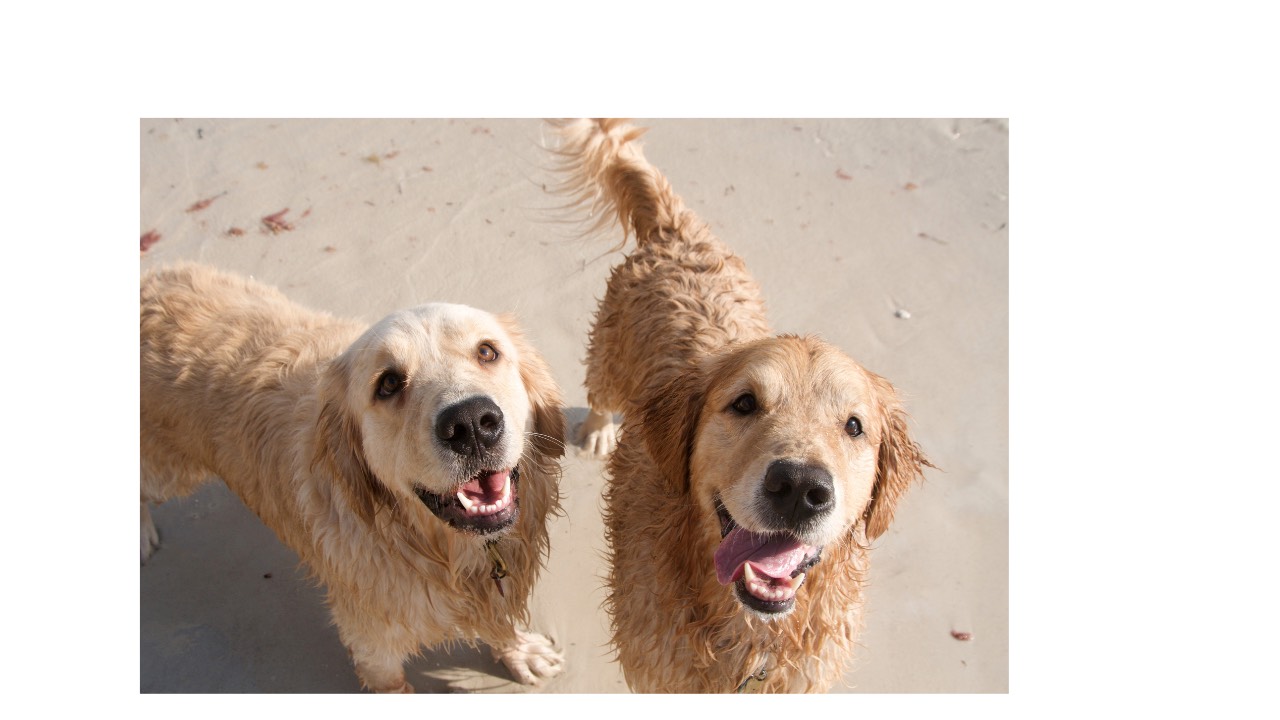Teaching Your Dog to Stay: Patience, Practice, and Practical Tips
Jul 30, 2024When new dog guardians begin training, one of the first cues they often focus on is "stay." Alongside foundational behaviours like "sit" and "come," teaching your dog to stay builds a strong foundation for everyday life. It helps your dog develop impulse control and gives you the ability to create calm moments in an otherwise busy household.
That said, teaching a solid stay can be challenging. Holding a position, even for a few seconds, can feel like an eternity for both you and your dog, especially in the early stages of training. The good news is that, with a clear approach and some patience, you can absolutely help your dog succeed.
Why Teach a Dog to Stay?
The stay cue is more than just a neat trick. It’s a life skill that offers structure and safety in everyday situations. Teaching your dog to stay can help prevent door dashing, offer calmness in exciting environments, and give you a few peaceful minutes to tie your shoe, prep a meal, or welcome guests at the door.
Stay also serves as a building block for more complex behaviours. You can combine it with cues like “go to your mat” or use it as a foundation for activities that require duration, such as calm greetings or cooperative care routines.
Setting Up for Training Success
Before you begin teaching your dog to stay, set up your environment for success. Choose a quiet, distraction-free space indoors where your dog can focus. Turn off the television, put your phone away, and remove any unnecessary background noise. Training works best when both you and your dog are fully present.
Use small, high-value treats that are easy to deliver and quick to eat. Avoid waving the treats around or showing them off too early, as this can lead to frustration or overexcitement. Keep them out of sight in your pocket or a treat pouch.
Before teaching “stay,” make sure your dog is comfortable with a sit or down cue. Stay builds on those behaviours, so if your dog hasn’t mastered them yet, start there first.
Three Ways to Teach a Reliable Stay
1. The Palm Signal Method
This visual method is excellent for all dogs and especially helpful for dogs who are hard of hearing. Begin with your dog in a sit or down position. Hold your hand out, palm facing the dog, in a “stop” position. Pair the gesture with a verbal cue such as “stay,” using a calm, clear voice.
Take a step or two back. If your dog holds position, return and reward with praise and a treat. If your dog breaks the stay early, gently reset and try again. Keep sessions short and successful. Reward even brief moments of stillness in the early stages.
Gradually increase the distance and duration. Over time, your dog will learn that the palm signal means pause and wait.
2. The Verbal Stay Cue Method
This method focuses on the verbal cue alone. Start by asking your dog to sit or lie down. Say “stay” once in a steady tone. Do not repeat the cue—this can confuse the meaning and reduce its effectiveness over time.
In your first session, don’t move right away. Reward your dog for holding still, even for three seconds. Add duration slowly in future sessions. Once your dog understands the verbal cue, you can begin to step back after giving it.
Introduce a release cue such as “free” or “break” to let your dog know when the stay is over. Pair it with an encouraging tone and movement to signal that they are now free to move.
3. The Mealtime Stay
Using your dog’s regular meals as part of training is a great way to build the stay behaviour without overusing treats. Begin just before mealtime. Ask your dog to sit or lie down near where you normally feed them. Hold the food dish in view and say your stay cue.
If your dog holds the position for a few seconds, place the dish down, use your release word, and let them enjoy their meal. Over time, increase how long your dog must wait before you release them to eat.
This routine builds patience and reinforces the concept that self-control leads to good things.
Strengthening the Stay Behaviour
Increase Duration Gradually
Add time in small increments. Even 10 extra seconds per session can lead to lasting improvement. Avoid pushing too far too fast, as this can frustrate your dog and lead to setbacks.
Add Distractions Slowly
Once your dog can stay in a calm environment, introduce mild distractions one at a time. Start with things like soft background noise, a squeaky toy nearby, or gentle movement. Always set your dog up to succeed by keeping distractions low enough for them to stay focused.
Build Distance Thoughtfully
Stay begins with you right next to your dog. As training progresses, take one step back, then two, and so on. Eventually, you may walk across the room or even out of sight. Always return to your dog to deliver the reward, and remember to release them from the stay.
What to Do if Your Dog Breaks the Stay
If your dog struggles to hold a stay, don’t worry. Go back a step and make the task easier. Try shorter durations, eliminate distractions, or reduce the distance between you and your dog. Celebrate small successes, and avoid scolding or showing frustration.
Make sure your rewards are motivating. If your dog isn’t working for the treats you’re using, try something more enticing. Cheese, boiled chicken, or freeze-dried liver can all be excellent high-value options. You can also use a favourite toy as reinforcement.
Keep sessions short, positive, and consistent. Training a solid stay takes time, and every dog learns at their own pace.
When to Ask for Help
If you’ve tried multiple approaches and your dog still struggles with the stay behaviour, it may be time to consult a certified professional dog trainer. A certified professional pet dog trainer can tailor the training process to your individual dog’s needs, offer fresh insight, and help troubleshoot specific challenges.
Final Thoughts
Teaching your dog to stay is one of the most valuable and versatile skills you can offer them. Whether you're managing mealtime, preventing jumping, or building calm behaviour in busy environments, stay sets the foundation for focus, self-control, and a strong human-animal bond.
By using consistent cues, practicing with patience, and gradually building up difficulty, your dog will develop the ability to hold a stay even in real-world situations. Start small, reward often, and celebrate progress every step of the way.





